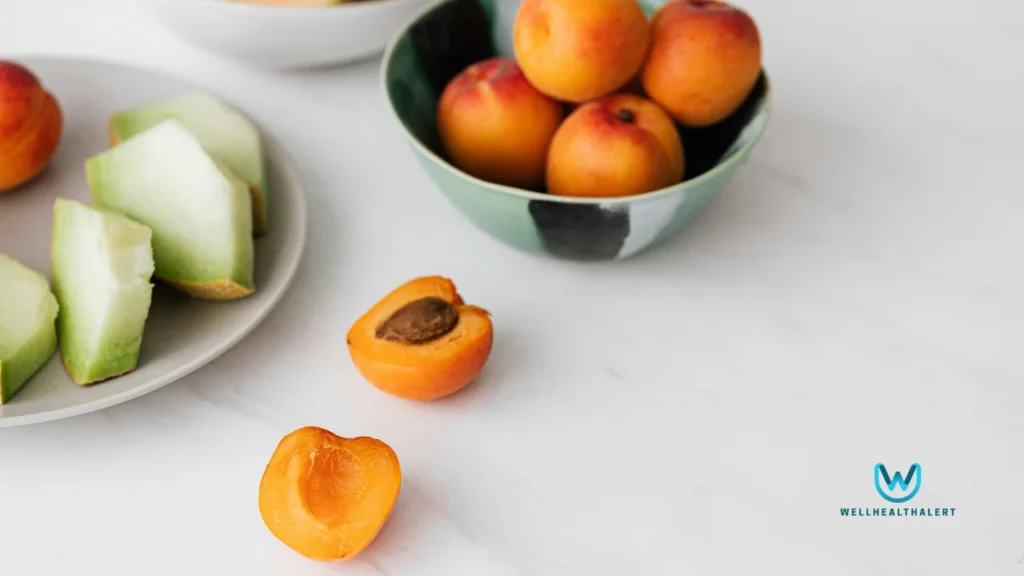Although it may seem strange to some, there are many health benefits to eating the skins of fruits and vegetables. Despite their frequent disposal, peels are a great dietary supplement due to the abundance of nutrients they contain. Based on research from Wellhealthorganic.com: Eat Your Peels: Unlocking the Nutritional Benefits, this article explores the myriad benefits of eating organic peels.
What is WellHealthOrganic.com?
An all-encompassing view of health and nutrition is the focus of WellHealthOrganic.com. For those interested in improving their health in an organic and natural way, it offers a wealth of information and resources. In addition to promoting environmental sustainability through the reduction of food waste, the site promotes eating organic peels in order to increase nutritional intake.
Nutritional Benefits of Fruit Peels
You can easily incorporate fruit peels into your daily diet to reap the many health benefits they offer, thanks to their high vitamin, mineral, and fiber content.
Vitamins in Citrus Peels
The vitamin C in citrus peels is very high, which is good for your skin and immune system. Garnish salads, dressings, and marinades with grated citrus peel for an easy way to increase your vitamin C consumption.
Antioxidants in Vegetable Peels
Carrot and potato skins, for example, are full of antioxidants that help the body deal with oxidative stress and may even lower the chance of developing cancer and other chronic diseases. Maximize your intake of these beneficial compounds by using the entire vegetable, including its peel.
Fiber-Rich Fruit Skins
Fruits with high fiber content, such as apple and pear skins, help keep blood sugar levels stable and improve digestion. Eating these peels can help you feel full for longer, which can make it easier to manage your weight.
Health Advantages of Organic Peels
The absence of dangerous chemicals and pesticides in organic peels makes them a healthier and safer option for consumption. If you want to eat peels that are good for your health and don’t have any negative side effects, go for organic.
Eco-friendly Uses of Food Peels
Reducing food waste by eating every part of an apple or pear is one way to live more sustainably. People can be inspired to think about their environmental impact by finding creative ways to use peels in cooking and home remedies.
Using Fruit Peels in Cooking
You can add a burst of flavor and texture to your meals while also adding nutrients by cooking with fruit and vegetable peels.
Recipes Using Organic Peels
You can add new flavors and nutritional value to foods like cakes, bread, and smoothies by chopping or grating the peels. One example is the zest that can be made from citrus peels, which can be used in both baking and cooking.
Weight Management with Fruit Peels
Fruit peels can aid weight management by making you feel fuller for longer because of the high fiber content. If you want to cut back on snacking and eating too much, try eating more peels.
Environmental Impact of Discarding Fruit Peels
Food waste is a major problem for the environment, and discarding fruit peels adds to it. One way to lessen one’s impact on the environment is to find new uses for the peels when cooking.
How to Safely Eat Fruit and Vegetable Peels
For non-organic produce, it is especially important to wash the peels well to remove any traces of pesticides or other contaminants. This way, you can enjoy the peels’ benefits without putting yourself in danger.
Creative Ways to Use Citrus Peels
The zest of citrus fruits can be dried and utilized as a tea or garnish, or it can be candied and turned into a homemade cleaning agent. These techniques not only make use of the peel, but they also give commonplace things and recipes a new spin.
Health Implications of Eating Organic Peels
Although there are many health benefits to eating peels, it is important to remember certain things to make sure this practice is as beneficial as it can be.
Nutritional Upsides of Eating Peels
You can increase your consumption of vital nutrients by eating peels. The increased fiber and antioxidant intake that results from regular consumption can improve health outcomes.
Potential Risks and How to Mitigate Them
The peels are nutritious, but they may contain chemicals and pesticides if they aren’t washed well or come from farms that don’t implement organic practices. If you’re going to eat the peels, make sure they’re organic and wash them well under running water.
Recommendations for Introducing Peels into Your Diet
Peels can be intimidating, so it’s best to ease into them by adding them to foods you already love. As you find the kinds and ways of preparing them that you like most, you can gradually increase your usage.
Role of Fiber in Digestive Health
Fruit and vegetable peels are a good source of fiber, which has several health benefits, including lowering cholesterol and keeping constipation at bay. Eating peels is a practical way to improve digestive health because of this.
Antioxidant Properties and Chronic Disease Prevention
Antioxidants in peels fight oxidative stress, which lowers the risk of chronic disease. The peels of vividly colored fruits and vegetables, like potatoes and apples, are especially prone to this.
Culinary Innovations with Vegetable Skins
If you want to spice up your cooking and add some new textures and flavors to old standbys, try using vegetable skins in some recipes.
Using Potato Skins in Your Diet
The skins of potatoes are a great source of vitamins C and potassium. Roasting them makes them crispy and perfect for snacking, and adding them to soups and stews makes them heartier and adds more nutrients and flavor.
Recipes for Broccoli Stalks and Peels
Despite their frequent disposal, broccoli’s peels and stalks are just as healthy as the florets. You can add their nutrient-rich goodness to slaws, stir-fries, or soups by shredding them.
Health Benefits of Eating Squash Peels
The skins of squash fruits are rich in nutrients and can be eaten. The peels of squash, when added to casseroles or other baked goods, are a great way to boost your antioxidant and fiber intake.
Creative Use of Carrot Peels
Roasting carrot peels with olive oil and herbs is a great alternative to throwing them away; they make for a tasty snack or side dish. To enhance the flavor and depth of vegetable stock, you can also add carrot peels.
Sustainability and Food Waste Reduction
Reduce food waste and help the environment by making it a habit to eat fruits and vegetables whole, including the peels.
Impact of Peel Usage on Food Waste
One way to reduce the amount of trash sent to landfills is to cook with fruit peels. In addition to helping the planet, this method also encourages a more eco-friendly cooking experience.
Composting Fruit and Vegetable Peels
Composting excess peels allows you to replenish soil nutrients even if you don’t end up using them all. Greenhouse gas emissions are decreased and gardening soil is improved through composting.
Educational Programs on Peel Benefits
More people will start eating peel if more people are informed about the benefits of doing so through educational programs. In addition to bettering people’s health, this also helps the environment as a whole.
Advocacy for Organic Farming
Due to the absence of toxic pesticides and chemicals used in organic farming, eating peels is even safer and more beneficial for your health. More sustainable farming practices can be achieved on a global scale through advocacy and the demand for organic products by consumers.
Also Read: Wellhealthorganic Vitamin B12
FAQs
Can banana peels be eaten?
Yes, banana peels are edible and rich in vitamins and fiber. They can be cooked to soften and used in smoothies or curries.
Are citrus peels safe to eat?
Citrus peels are safe to eat but should be washed thoroughly and ideally come from organic sources to minimize pesticide exposure.
How should I prepare vegetable peels for eating?
Wash them thoroughly under running water, and for extra safety, you can also use a vegetable brush to remove any residual dirt or pesticides.
Which fruit peels are highest in fiber?
Apple and pear peels are among the highest in dietary fiber, benefiting digestive health and weight management.
What are the risks of eating fruit peels?
The main risks involve pesticide residues and possible contaminants, which can be mitigated by choosing organic produce and washing it well.
Conclusion
The health, environmental, and culinary advantages of utilizing fruits and vegetables to their fullest potential, including their peels, are truly remarkable. In addition to enhancing our diet with vital nutrients, this practice is essential for promoting sustainability and lowering food waste. With the help of websites like Wellhealthorganic.com: Eat Your Peels: Unlocking the Nutritional Benefits, anyone can learn to use the peels of fruits and vegetables to their fullest potential in the kitchen, contributing to a greener world and a better way of life. We are moving in the direction of a more conscientious and responsible lifestyle by adding peels to our food.

Robert Wiley is a versatile and accomplished writer with expertise spanning multiple niches, delivering insightful and engaging content across various fields. His diverse experience and deep knowledge make him a sought-after author in the world of digital writing.




